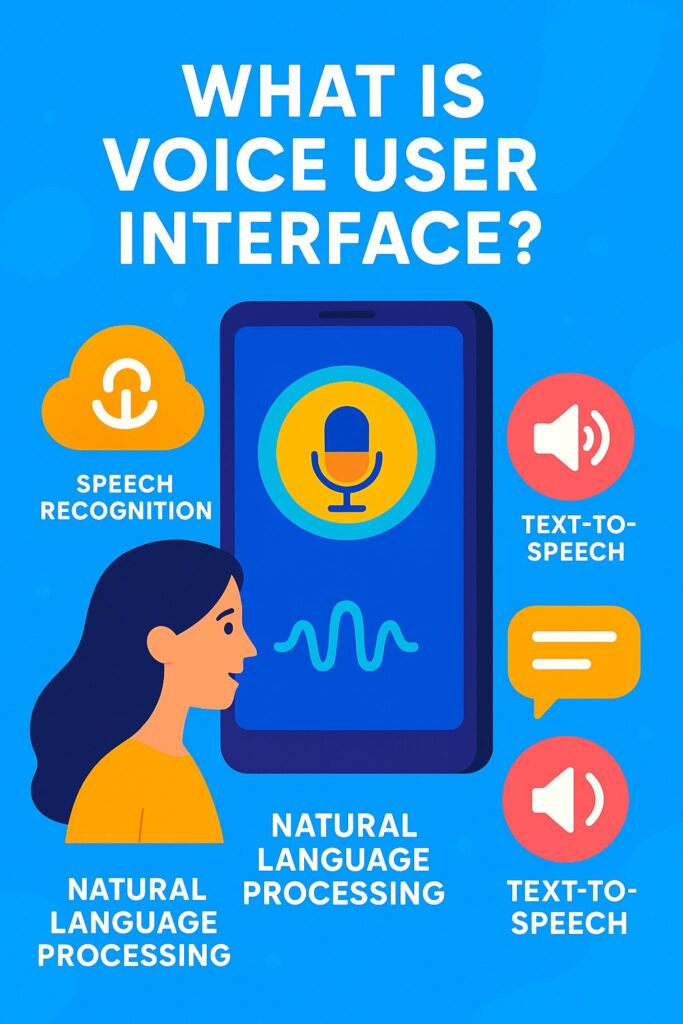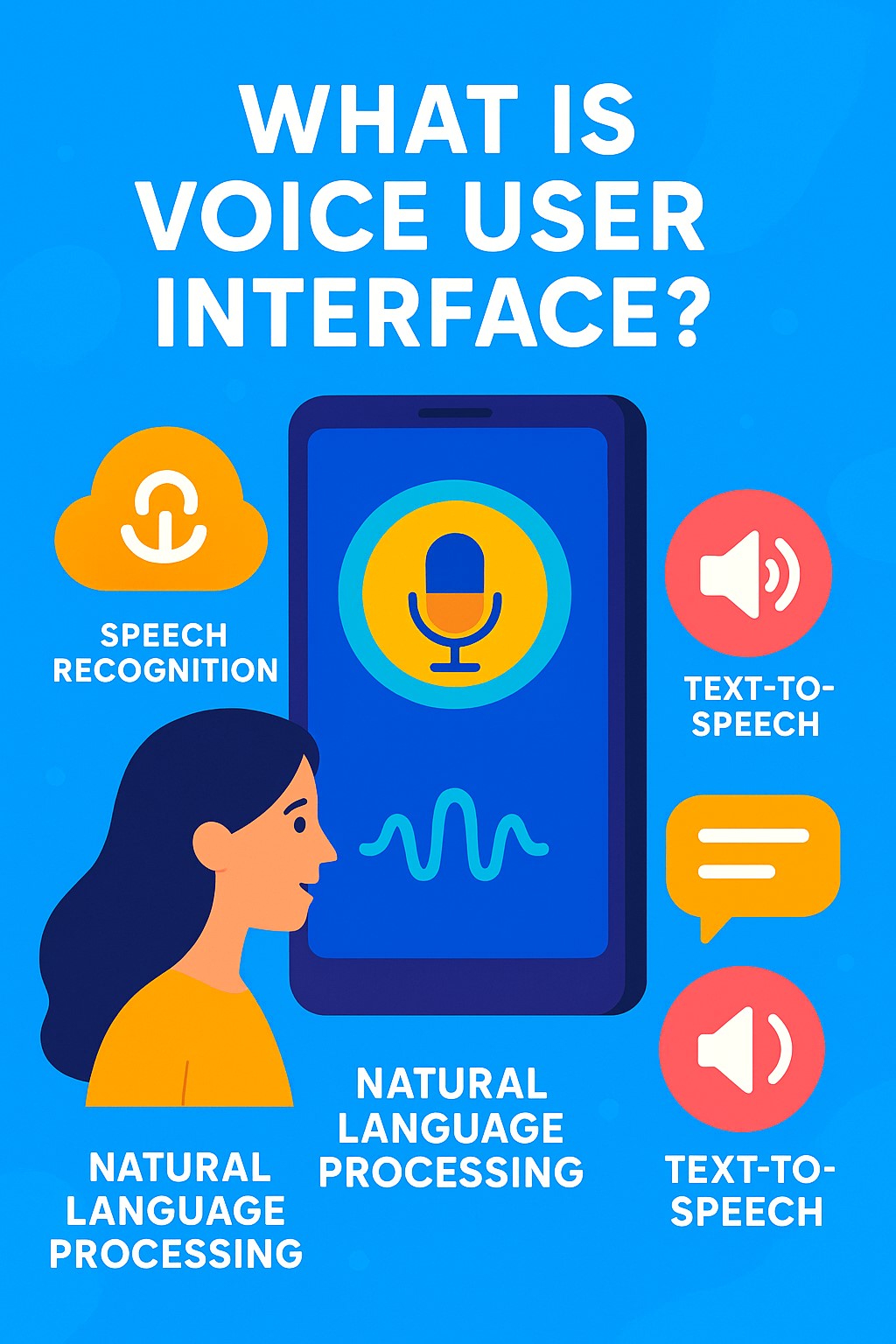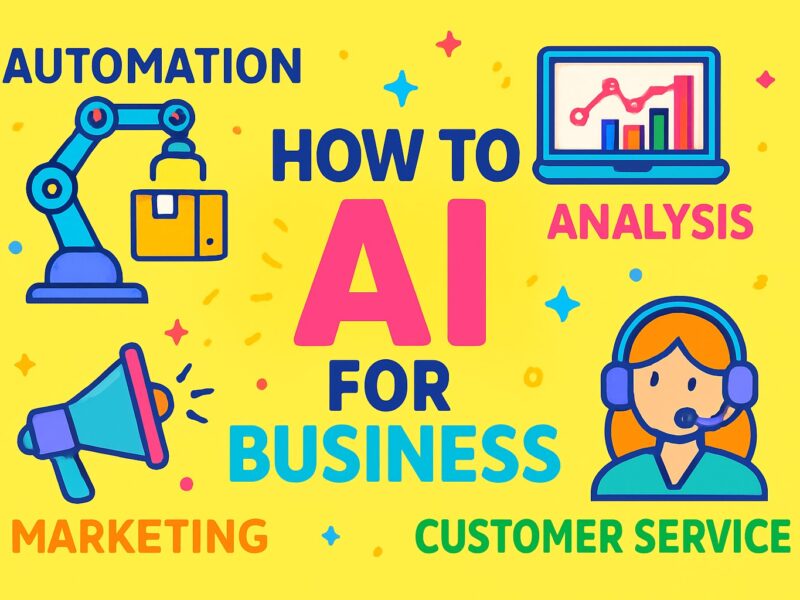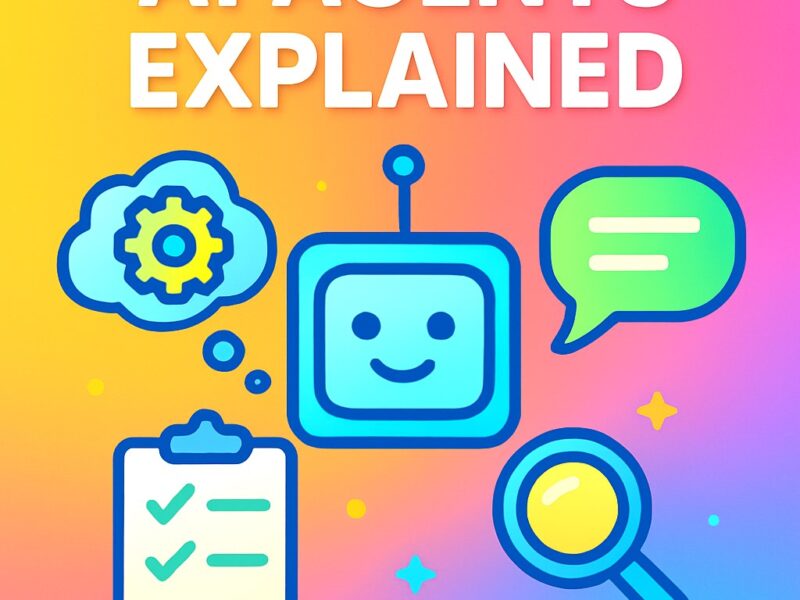What Is Voice User Interface ?

Voice User Interface (VUI) is rapidly transforming the way we interact with technology. Instead of typing commands or tapping on screens, users can now speak naturally to control devices, get information, and complete tasks. VUI has become a fundamental component of modern digital experiences, especially with the rise of smart devices, home automation, and artificial intelligence. But what exactly is a Voice User Interface? How does it work, and why is it so important today?
Let’s explore this innovative technology in detail.
Understanding Voice User Interface (VUI)
A Voice User Interface (VUI) is a system that enables people to interact with digital devices using spoken language. This type of interface interprets voice commands and responds with spoken feedback or actions. The primary goal is to allow hands-free, natural communication between humans and machines.
VUI combines several technologies—speech recognition, natural language processing (NLP), and speech synthesis. These components work together to understand user input and provide accurate responses. The result is a seamless experience where users can speak commands instead of typing or clicking.
How Voice User Interfaces Work
The inner workings of a VUI can be broken down into several steps:
-
Voice Input Detection
When a user speaks, a microphone captures the audio. The system first identifies that the sound is human speech and not just background noise. -
Speech Recognition
The captured audio is converted into text through automatic speech recognition (ASR). This is where the system deciphers what words were spoken. -
Natural Language Understanding (NLU)
After transcribing the voice, the system uses natural language understanding to interpret the user’s intent. For example, the phrase “What’s the weather like?” triggers the system to fetch weather data. -
Response Generation
Once the system knows what the user wants, it generates a suitable response. This could be a spoken reply, a sound, or an action—such as turning on lights or searching the web. -
Speech Output (Text-to-Speech)
Finally, the system uses text-to-speech (TTS) technology to communicate back in a natural-sounding voice.
All of this happens in just a few seconds, providing a fast and intuitive user experience.
Key Components of a VUI System
A fully functional voice user interface includes the following core components:
-
Microphone and Audio Input Device
Captures the user’s voice in real time. -
Speech Recognition Engine
Converts speech into text with high accuracy. -
Natural Language Processing Module
Understands the meaning and intent behind the spoken words. -
Dialog Management System
Manages the conversation flow, deciding what the system should say or do next. -
Text-to-Speech Generator
Converts responses into spoken audio for user feedback.
Each component plays a vital role in ensuring the VUI performs efficiently and responds correctly.
Real-World Examples of VUI in Use
Voice user interfaces are now found in a wide range of applications:
-
Smart Home Devices
Users can control lights, thermostats, or appliances by speaking commands. -
In-Car Systems
Drivers can make calls, get directions, or play music using voice controls, allowing for hands-free operation. -
Healthcare
VUI helps with medical data entry, patient monitoring, and even guiding users through basic health checks. -
Banking and Finance
Voice commands allow users to check balances, initiate transfers, or access account information securely. -
Customer Support
Automated voice assistants now handle inquiries, troubleshoot issues, and route calls more efficiently.
These examples highlight how VUI is not just a novelty—it’s a functional and often necessary tool in modern life.
Benefits of Using Voice User Interfaces
There are several significant advantages to using VUI:
-
Hands-Free Operation
Great for multitasking or situations where manual control is inconvenient or impossible. -
Faster Interaction
Speaking is often quicker than typing, especially for longer queries or commands. -
Accessibility
Voice interfaces help users with visual or physical impairments access technology more easily. -
Natural Communication
Speaking feels more intuitive for many users, especially those unfamiliar with traditional interfaces. -
Productivity Boost
VUI can speed up repetitive tasks and reduce screen fatigue in professional environments.
By making technology more accessible and responsive, VUI improves user satisfaction across many sectors.
Challenges and Limitations of VUI
Despite its many benefits, VUI still faces some challenges:
-
Speech Recognition Accuracy
Accents, background noise, and unclear pronunciation can affect performance. -
Limited Context Understanding
Some systems struggle to understand complex or context-dependent requests. -
Privacy Concerns
Always-on microphones and voice data collection raise issues about user privacy and data security. -
Language and Cultural Barriers
Supporting multiple languages and dialects can be complex and resource-intensive. -
Lack of Visual Feedback
Unlike screens, voice-only interfaces can make it harder for users to confirm or correct actions.
To be truly effective, voice interfaces must continue to evolve and address these challenges through better design and smarter algorithms.
Designing a Good Voice User Interface
Creating an effective VUI experience requires thoughtful design. Here are key principles:
-
Clear Prompts and Feedback
Always let users know what the system is doing or expecting. -
Error Handling
Plan for misunderstandings and offer ways to repeat, rephrase, or clarify. -
Concise Responses
Keep feedback short and to the point to avoid user frustration. -
Personalization
Use context and history to tailor responses for each user. -
Inclusive Language
Design for a diverse audience by considering various speaking styles and abilities.
When done well, a VUI should feel like a natural conversation, not a scripted exchange.
Future Trends in Voice User Interfaces
Voice user interfaces are evolving rapidly. Here’s what the future may bring:
-
More Natural Conversations
Advances in AI will make systems more capable of holding human-like conversations. -
Emotional Intelligence
VUIs may soon detect tone, emotion, and stress in a user’s voice to provide better responses. -
Edge Computing Integration
Voice processing may happen directly on devices, improving speed and privacy. -
Multimodal Interfaces
Combining voice with gestures, visuals, or touch will create more immersive experiences. -
Industry-Specific VUIs
Tailored voice interfaces will emerge in education, manufacturing, and entertainment.
As these trends take shape, VUI will play an even more critical role in how we live and work.
Conclusion
So, what is Voice User Interface? Simply put, it’s a revolutionary way to interact with technology using your voice. With advancements in AI, natural language processing, and speech recognition, VUI is becoming more accurate, accessible, and useful than ever before.
From smart homes to cars, from healthcare to customer service, voice interfaces are creating faster, friendlier, and more inclusive digital experiences. While challenges like privacy and accuracy still exist, the future of VUI is promising.
As this technology continues to grow, it’s likely to become the default method for interacting with many devices, making life simpler and more efficient—one voice command at a time.
Key Takeaways: What Is Voice User Interface?
-
Definition: A Voice User Interface (VUI) enables users to interact with digital systems through spoken commands, making communication with technology more natural and hands-free.
-
How It Works: VUI relies on components such as speech recognition, natural language processing (NLP), and text-to-speech to convert spoken input into meaningful actions or responses.
-
Core Components: Essential elements include a microphone, speech recognition engine, NLP system, dialogue manager, and speech synthesizer.
-
Real-World Applications: VUIs are used in smart homes, vehicles, healthcare, finance, and customer service, enabling hands-free operation and enhancing accessibility.
-
Benefits: Key advantages include faster interaction, improved accessibility for all users, hands-free operation, and increased productivity in daily and professional tasks.
-
Challenges: Issues such as speech recognition errors, privacy concerns, lack of context awareness, and language limitations still need to be addressed for optimal performance.
-
Design Principles: Good VUI design includes clear feedback, concise responses, robust error handling, and inclusive interaction tailored to various user needs.
-
Future Trends: VUIs are evolving to include emotional intelligence, edge computing, and multimodal interfaces for richer, more responsive user experiences.
-
Conclusion: VUI is shaping the future of human-technology interaction by offering a faster, more intuitive, and inclusive interface across industries and devices.
References
https://en.wikipedia.org/wiki/Voice_user_interface
Link License – https://en.wikipedia.org/wiki/Wikipedia:Text_of_the_Creative_Commons_Attribution-ShareAlike_4.0_International_License
Dear Friends, warmly welcome You to visit link below to discover more tech products.
https://techsavvo.com/category/tech-products/


